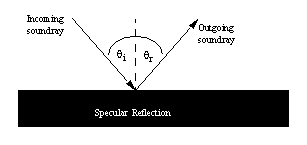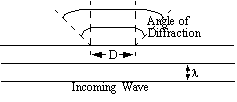Basic Facts Week 2
For any periodic motion, a motion that repeats itself after a time
= P, called the Period.
We define the Frequency of motion by f = 1/P so that P = 1
/F.
We measure the frequency in Hz. 1 Hz = 1 repeat per second.
A Wave is a disturbance that travels through a medium.
A periodic wave is a periodic disturbance that travels through a
medium.
It is characterised by both the time between repeats at a fixed point
in space, the Period P, and the distance between repeats at a single time, the Wavelength λ. The disturbance
travels a distance of one wavelength in one period so that it has a speed
v = f×λ where f is the frequency
corresponding to period P.
A wave carries energy with it in the direction in which the wave travels.
In a Longitudinal Wave the medium moves back and forth in the direction of wave motion.
In a Transverse Wave the medium moves back and forth at right angles to the direction of wave motion.
Sound is a longitudinal wave.
Waves on a stretched string, light, radio waves, and small ripples on the surface of water
are transverse waves.
An oscillating system (and this includes a system that is
to transmit a wave) must have
1) a mass--a source of inertia.
When the mass moves it carries energy in the form of Kinetic
Energy.
2) a restoring force--a force like a spring that pulls back when
pushed and pushes back when pulled.
When the "spring" is compressed or expanded it stores energy in the
form of Potential Energy.
A simple oscillator moves in a way that we call Sinusoidal
Motion.
A graph of the position of the mass versus time looks like this

NOTE. We also sometimes use the term Simple Harmonic
Motion.
Sound travels in straight lines (rays) that are perpendicular to the wave fronts.
Sound waves reflect off hard surfaces. If the surface is smooth then the sound emerges travelling in a well defined direction and the reflection is said to be specular. In this case θi = θr.

If the surface is rough then the sound is reflected in all directions and the reflection is said to be diffuse. Rough means that there are surface irregularities which are larger than 1 wavelength of the sound in question.
Sound passing through a gap
or past an obstacle suffers from diffraction.
A portion of the sound energy is spread out into the region that
would normally be in shadow.
The extent of the diffraction is proportional to λ/D
where λ is the wavelength of the sound
and D the size of the obstacle.

Large openings (D >> λ) show little or no diffraction. Small openings (D ~ λ) show significant diffraction. Low frequencies (long wavelengths) are more subject to diffraction than high frequencies (short wavelengths).
Two sounds with nearly equal freqencies, f1 and f2, will produce beats if the frequency difference is small enough.
Useful Facts
These are things that it can be helpful to know but that you will not be responsible for remembering for quizzes.
A sound that reaches the ear by two different paths undergoes the phenomenon of interference.
The sound at the ear is louder (constructive interference) if the two paths have lengths that differ by a whole number of wave lengths. That is, if |L2-L1| = nλ where n is an integer.
The sound is quieter at the ear (destructive interference) if the two paths have lengths that differ by an odd number of half wavelengths. That is, if |L2-L1| = (n+0.5)λ where n is an integer.
